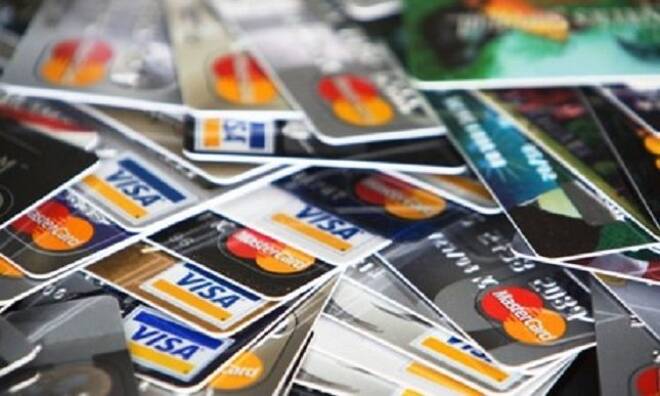Advertisement
Advertisement
How Is Credit Affected by the Federal Funds Rate?
By:
The recent Fed rate hike is slated to have a dramatic effect on borrowers. The Fed rate hike is expected to cost credit card consumers $1.6 billion
The recent Fed rate hike is slated to have a dramatic effect on borrowers. For starters, the Fed rate hike is expected to cost credit card consumers $1.6 billion in interest repayments alone. Currently, the federal funds rate (FFR) is 1%, after having been revised sharply higher in March. The US GDP growth rate is at 2.1%, and the unemployment rate is holding steady at 4.7%. The current inflation rate for February 2017 was measured at 2.7%.
Of all the factors that influence credit facilities, the federal funds rate is the most important. The FFR increased by 25-basis points on Wednesday, March 15, 2017. While no rate hikes are expected anytime soon, we will be seeing another important meeting of the FOMC on Wednesday, 3 May 2017.
Credit Card Repayments Likely to Rise Sharply
The Fed raised interest rates at its March meeting, on the basis of a strengthening labor market and the increasing strength of the US economy. The FOMC statement made mention of labor market conditions and inflation when the FOMC decided to hike the FFR. Additionally, the FOMC anticipates a strengthening of economic conditions, with gradual increases in the FFR throughout 2017.
However, the FFR will remain lower than the anticipated levels in the long-run. As economic data comes in, so the FFR will be adjusted accordingly. For everyday consumers, the movements in the federal funds rate are a boom and a bust. Anyone who has a variable interest rate loan will be struggling with increased interest rates on their credit facilities. As the FFR increases, so credit costs rise accordingly. Credit card debt is an area that is particularly sensitive to rate hikes. The additional finance charges to borroweres that are anticipated in 2017 could top $1.6 billion according to analysts.
Long-Term Loans to Take a Big Hit from FFR Hikes
The variable interest rates on US credit cards make them particularly susceptible to changes in the FFR. For every 25-basis point rate hike in the federal funds rate, credit card holders will typically pay $2.50 per year for every $1,000 they have in debt. According to NerdWallet, the federal funds rate increases this year will raise the typical credit card interest payments by $17 per year (up from $1,333) on the proviso that the APR increases from 19.36% to 19.61%.
This $17 increase may not appear extortionary, but does not tell the true story. Most people are several thousand dollars in debt, possibly tens of thousands of dollars, and the interest rate is going to increase by more than 0.25% in 2017. In fact, the Fed is likely to have the FFR at 1.50% – 1.75% by the end of 2017. This makes it even more urgent to pay down high interest credit card debt and other variable debt as quickly as possible.
Of course, there are many other ways where higher interest rates are going to impact consumers directly where it hurts most. Variable mortgage rates will take a big hit, while fixed mortgage rates will be sheltered to a degree. Recall that fixed mortgage rates are closely tied to yields on US treasury notes. Consider that in December 2012, the average 30-year fixed mortgage was 3.50%. Today it’s 4.38%.
Automobile loans will also become more expensive in 2017. However, the nominal price increases are marginal. For example, a $25,000 auto loan will only cost $3 more per month, according to bank rate. This means that the items to be concerned about are the credit card repayments, which typically grow at an alarming rate as more debt is added on to already high levels of interest repayments.
The Bright Light at the End of the Tunnel
Interest rate hikes have a positive effect on savers. For banks, higher interest rates mean more money in the form of interest repayments on loans. However, they also mean that banks must pay savers more on their fixed-interest-bearing accounts. Note that banks are slow to respond to increasing interest rates on savings accounts, but really quick to respond to increasing interest rates on loans. Consider that in 2015 Wells Fargo & Company took just 12 minutes to increase the interest rates on loans after the Fed announced a rate hike. To date just 8 banks have increased rates on savings since the series of rate hikes were implemented.
About the Author
Guestauthor
Advertisement
